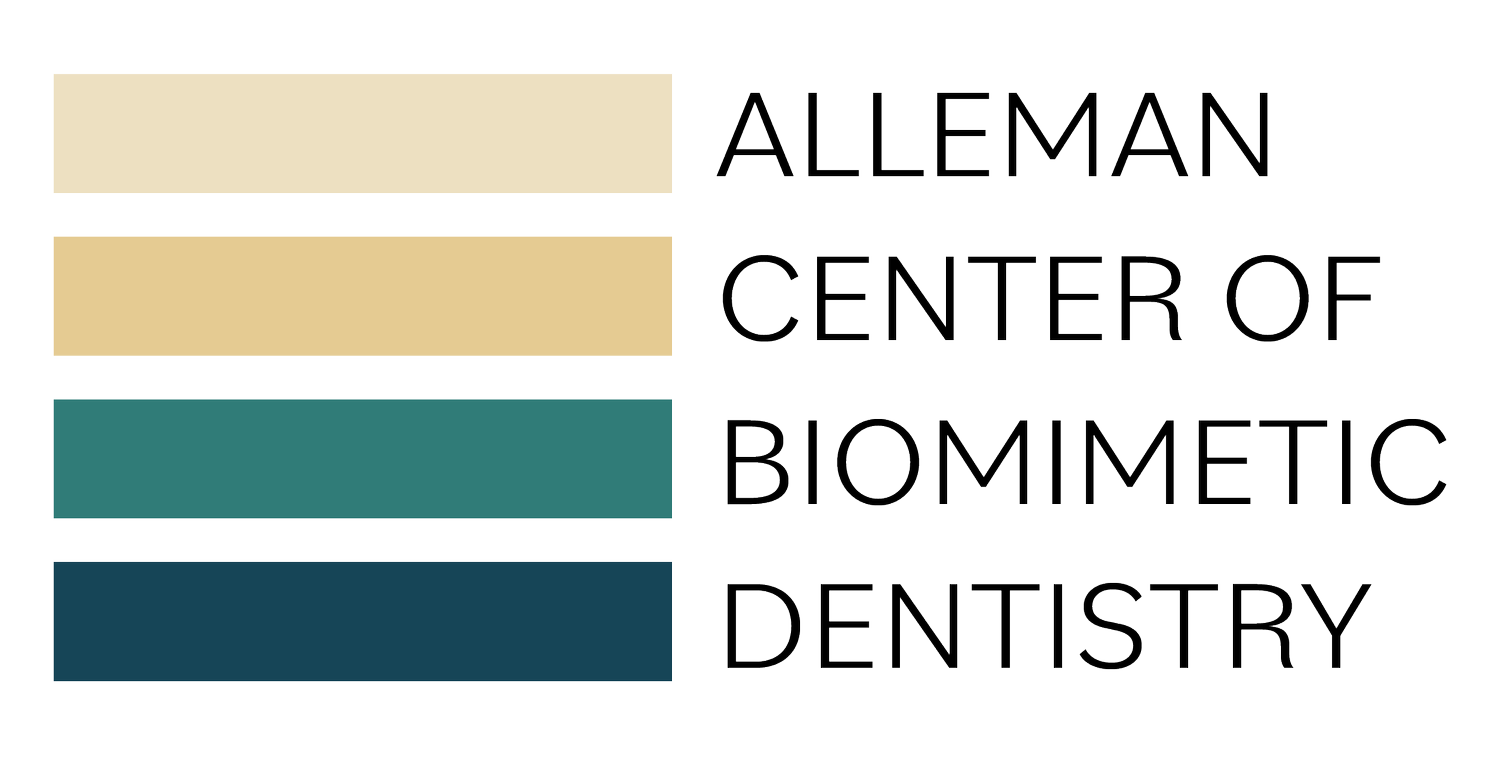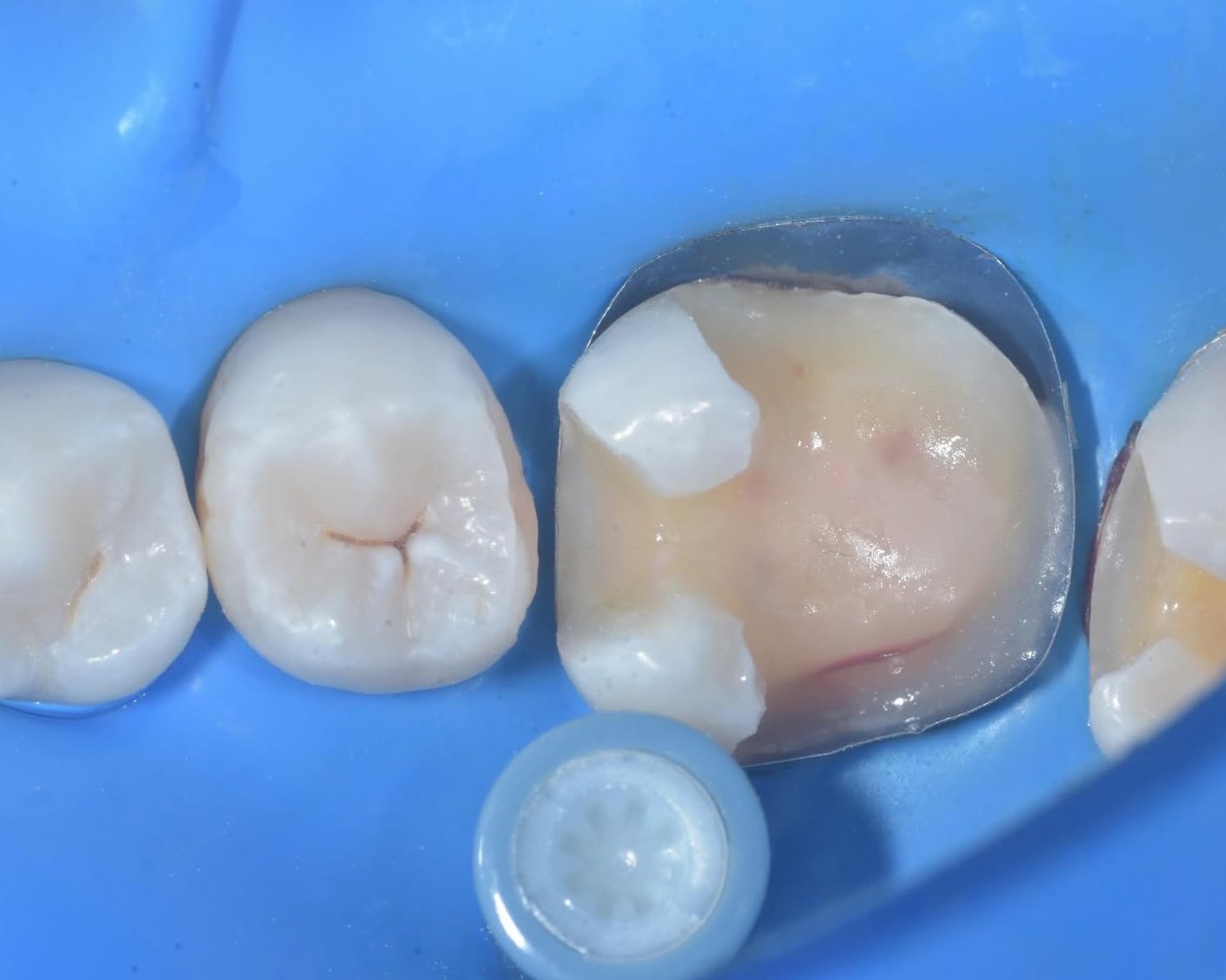How to Choose a Dental Bonding Agent (DBA)
Dental bonding agents (DBA), also known as dentinal bonding systems (DBS), were first developed in the 1950s, but only in the past two decades have advancements in these materials shown evidence that they offers superior results to traditional retention form.
Use of dental bonding agents, or dentinal bonding system, is shown here in this case by Dr. Davey Alleman, DMD.
What do dental bonding agents do?
Dental bonding agents create a molecular bond to dentin with the goal of securing a dental restoration with high bond strength rather than the retention form methods used with amalgam fillings or full coverage crowns. These dental bonding systems now have the capabilities to seal exposed dentin at the nanometer level, so small that bacteria cannot enter under the restoration. Once the dental bonding agents are applied — an adhesive step sometimes referred to as resin coating — the exposed dentin is sealed and ready for enamel replacement.
The dentinal bonding system is used to seal deep caries left too near the pulp to safely remove. This still stop the inflammation of the pulp and prevent reinfection. Case by Dr. Davey Alleman, DMD.
How do dental bonding agents vary between manufacturers?
Different manufacturers use different primary molecules in their dental bonding agents. The dentinal bonding systems can also range from one-, two- to three-step systems. Multi-bottle systems separate the primer from the adhesive. Some systems will deactivate matrix metalloproteinases to prevent a 25% degradation of the hybrid layer. One-bottle systems attempt to combine these steps to simplify the restorative process.
Simpler or faster isn’t always better. These pictures show the difference between a poorly bonded composite restoration with leaking margins and the same teeth restored using biomimetic techniques and a gold-standard bonding system. Case by Dr. Davey Alleman, DMD.
How to pick a dental bonding system
At the Alleman Center, our goal with biomimetic dentistry is to achieve a bond to dentin that mimics the tooth’s natural bond to itself, which is 30-50 MPa. Bonds at this strength have been shown to withstand the forces of occlusion and stay bonded for over 20 years and counting
Using gold-standard adhesives, as demonstrated over decades of testing for their bond strength and rate of bond degradation, is the first step to a long-lasting restoration. The second step is understanding the techniques that make these high bond strengths possible. Slide from the Biomimetic Mastership.
Based on long-term dental bonding agent research by Bart van Meerbeek, the products that have been studied and shown to bond at a biomimetic strength are Kerr OptiBond FL, Kuraray Clearfil SE Bond and Kuraray Clearfil SE Protect. While these are the current gold-standard dental bonding systems, that does not mean that new systems currently on the market will not achieve this same classification once they have had time for the same level of evaluation. Additionally, simply using these materials also does not guarantee a biomimetic bond. Your restorative techniques affect bond strength just as much as the dental bonding agents used in the restoration.
At the Alleman Center, we teach doctors how to analyze the research of dental bonding agents, so they can select the best materials for themselves. Material availability varies widely by country, so understanding how to select the best materials available to you is imperative. We give doctors the published literature so they can filter through the sales pitch and find independently researched facts for dental bonding agents.
Using the best dental bonding agent is only beneficial when paired with the best techniques. Biomimetic dentistry offers superior results but is techniques sensitive. This is why Dr. David Alleman created his Six Lessons Approach to Biomimetic Restorative Dentistry. Case by Dr. Davey Alleman, DMD.
Technique matters just as much as materials
When dental bonding agents are evaluated, they are bonded to flat surfaces. This does not account for C-factor or the bond potential of different substrates within the tooth. You can create a biomimetic bond but still have failing restorations if caries and cracks are not treated in a reproducible way.
Dr. David Alleman, DDS created his Six Lessons Approach with all of these factors in mind. Rather than solely relying on the recommendations from manufacturers and sales representatives, he went directly to the research to understand how to maximize the effectiveness of dental bonding agents and predictably bond to dentin. At the Alleman Center we only teach the Six Lessons Approach because it has been proven by all of our alumni to be the best foundation for restoring teeth so they stay bonded and symptom-free. Learn more at our biomimetic dentistry training programs.
Learn more about the variables in a biomimetic restoration in Dr. David Alleman’s Six Lessons Approach Podcast episode.
The Alleman Center did not receive any financial contributions from manufacturers for mentioning specific products in this post. Learn more in our financial support disclosure.












